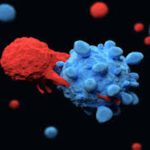New Delhi, February 25, 2018 : The common medical events during a flight include dizziness, fainting, diarrhea, nausea and vomiting, shortness of breath, chest pain, palpitations and headaches, while heart attacks, other cardiovascular problems, seizures, and strokes constitute the most frequent in-flight medical emergencies often requiring diversion of an aircraft.
An estimated 44,000 in-flight medical emergencies occur worldwide each year, according to a study published May 30, 2013 in the New England Journal of Medicine. Around one in-flight medical emergency will occur in every 604 flights. Data from the Lufthansa registry published in 2012 shows that one medical incident will occur for every 10,000 to 40,000 passengers on commercial aircraft will have a medical incident while on board (Dtsch Arztebl Int. 2012 Sep;109(37):591-601).
More than 900-1000 people die each year in-flight. This number does not include deaths in medical patients being transported from one destination to the other. These 1000 deaths are unexpected deaths in people who otherwise are either healthy or a known-disease patient but fairly well controlled on medicines. Cardiac arrest is the leading cause of in-flight death. When cardiac arrest occurs, any delay in starting resuscitation and in using a defibrillator to deliver a shock when needed will reduce the person’s chance of survival.
The pilot of the aircraft has the overall responsibility of the safety of passengers, the flight crew has to manage any in-flight medical emergency. Hence, all flight crew should be trained to recognize common medical emergencies and certified in first aid for medical emergencies. They should also be trained in chest compression CPR, which can be life saving, if the cardiac arrest is due to ventricular tachycardia or ventricular fibrillation and, also the use of an automated external defibrillator (AED). They should undergo a refresher course periodically, every year or two.
All airlines by law are required to have automatic electric defibrillators (AEDs) on board, which has reduced the deaths rates in cardiac arrest by up to 40% (British Airways). They are required to carry a first aid kit, which can be administered only by a doctor.
In addition to other required medications and equipment, the emergency medical kit should also contain tablets like nitrates, aspirin and clopidogrel. If a heart attack is suspected, then chewing 300 mg of aspirin and 300 mg (four tablets) clopidogrel taken orally with water can reduce the chances of death by almost 40%.
In every flight, a medical doctor should preferably be on board, however, this rather may be difficult to implement practically. Instead, airlines could float a scheme whereby subsidized or free tickets could be offered to the first medical doctor boarding a particular flight.
Though the crew is trained in first-aid, it always seeks the help of health care providers aboard the aircraft. “Is there a doctor on board?” is an announcement familiar to us all.
In every flight, a medical doctor should preferably be on board, however, this rather may be difficult to implement practically. The odds of a doctor being on board is around 50%. So, the airlines could float a scheme whereby subsidized or free tickets could be offered to the first medical doctor boarding a particular flight. Or, all exit seats, which are being sold at a higher cost due to more leg space could instead be reserved for health care provider, not necessarily a doctor, who is trained in first-aid training course, including CPR and is well-versed with an AED.
I had first raised these issue in 2005 when my father-in-law, Mr GL Sanghi a noted lawyer of Supreme Court of India passed away in flight, when he was traveling from San Francisco to Frankfurt. He was 73 years old at that time. He was not a known case of diabetes, high blood pressure or heart disease. He was a controlled asthmatic. He took a Lufthansa flight from San Francisco to Frankfurt on5th January (Thursday) at 2:15 pm. Three hours after the flight took off, he had a large bout of vomiting and within minutes developed cardiac arrest from which he could not be revived. Fortunately, there was a US-based Cardiologist on board, who attended to him attended him.
Very recently, Dr RN Tandon, the Hony Secy of the Indian Medical Association (IMA) revived a fellow passenger who had collapsed in-flight from Delhi to Mumbai. As the only Doctor on board, he was called by crew to help another passenger who was pulseless with no respiration. He immediately performed CPR and could successfully revive the person.
This incident re-opens the debate about the in-flight health-related issues and the safety of passengers and should a seat be reserved for a doctor (or a health care provider) in every flight.
While a doctor being on board a flight does not automatically ensure survival, it does give the person a fighting chance.
Dr KK Aggarwal







